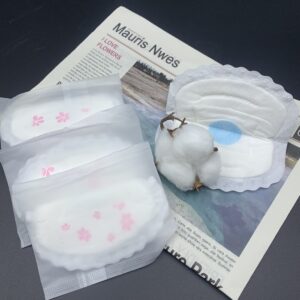Updated on July 5, 2023
What are the pros and cons of using a menstrual cup?
Menstrual cups are a popular alternative to traditional pads and tampons, and they have both advantages and disadvantages.
Here are some pros and cons of using a menstrual cup:
Pros:
Reusability: Menstrual cups are reusable and can be used for up to 10 years with proper care and maintenance. This can save money and reduce waste compared to disposable pads and tampons.
Environmentally friendly: Menstrual cups produce less waste than disposable pads and tampons, making them a more eco-friendly option.
Convenience: Menstrual cups can be worn for up to 12 hours, which means less frequent changes compared to pads and tampons.
Comfort: Many people find menstrual cups to be more comfortable than pads and tampons, as they do not cause irritation or dryness.
Lower risk of toxic shock syndrome: Menstrual cups have a lower risk of toxic shock syndrome compared to tampons, as they do not absorb blood.
Cons:
Learning curve: It can take some time to learn how to use a menstrual cup properly, which can be frustrating for some people.
Messy: Emptying and cleaning the menstrual cup can be messy, especially in public restrooms or other less-than-ideal situations.
Cost: While menstrual cups can save money in the long run, they have a higher upfront cost than disposable pads and tampons.
Not suitable for everyone: Menstrual cups are not suitable for everyone, as they require insertion into the vagina. Some people may find this uncomfortable or difficult.
Maintenance: Menstrual cups require regular cleaning and maintenance to avoid infection and ensure longevity.
Overall, menstrual cups are a safe and effective alternative to traditional pads and tampons. However, they may not be suitable for everyone and require a bit of a learning curve. It’s important to consider your personal preferences and needs when deciding whether a menstrual cup is the right choice for you.
What are some tips for cleaning and maintaining a menstrual cup?
Cleaning and maintaining your menstrual cup is important to ensure its longevity and to prevent infection.
Here are some tips for cleaning and maintaining your menstrual cup:
Wash your hands before and after handling your menstrual cup to prevent the spread of bacteria.
Rinse your menstrual cup with cold water before washing it to help remove any blood or debris.
Wash your menstrual cup with mild, unscented soap and warm water. Avoid using harsh soaps or cleaning agents, cheap feminine pads as they can damage the silicone and cause irritation.
Make sure to clean all areas of the menstrual cup, including the rim and the suction holes.
Boil your menstrual cup in water for 5-10 minutes between menstrual cycles to sterilize it. This can help kill any bacteria or germs that may be present.
Store your menstrual cup in a breathable pouch or container between menstrual cycles. Avoid storing it in an airtight container, as this can trap moisture and promote the growth of bacteria.
Check your menstrual cup for signs of wear and tear, such as cracks or tears. If you notice any damage, replace your menstrual cup immediately.
Avoid using any sharp objects or abrasive materials to clean your menstrual cup, as this can damage the silicone and cause irritation.
By following these tips, you can help ensure that your menstrual cup remains clean and hygienic, and that it lasts as long as possible.


